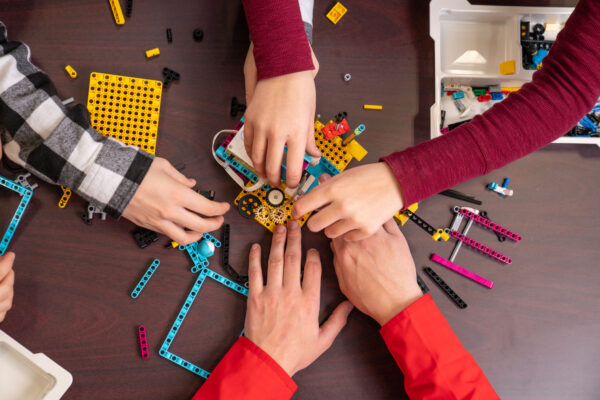With modern technology constantly evolving and advancing, STEM-related skills are in demand like never before. STEM is an acronym for the study of science, technology, engineering, and math. Not only does encouraging students to concentrate on STEM-related studies nurture their curiosity and teach them to innovate and create, but it also sets them up for success in the future as STEM-related jobs become more and more prominent.
By 2030, jobs such as Robot System Repair, Drone Technician, AR & VR Creator, Electric Car Engineer, Green Power Engineer, Future Farming, and many more will be highly prevalent and highly sought after. Employment in STEM occupations is projected to grow almost 9% by 2028 compared to non-STEM jobs, which will only increase by 5%. They also typically provide higher wages on average than non-STEM jobs.
So how can you help spark an interest in STEM for your child? One important aspect is to show them that it’s more than just crunching numbers or working on formulas; it’s about imagination, curiosity, big ideas, and, most importantly, FUN! Here are a few ways to help your child become more interested in STEM education.
Play STEM Games With Your Children
Many exciting and challenging STEM-related games are out there that provide fun for the entire family. Of course, LEGO is always a great way to build and create. You can also spark their interest by helping them build a Rube Goldberg machine that uses a chain reaction to accomplish a simple task. You’ve probably seen videos of them on social media. You can find information on how to build your own on this page.
If you visit any toy store, you’ll find many STEM-related toys and games that will provide hours of fun at home and help to encourage creativity.
Provide STEM Role Models
It’s been said that “you can’t be what you can’t see”. Introducing your child to some STEM role models of the past and present can show them what they, too, can achieve. STEM innovators such as Cynthia Breazeal, Rosalind Franklin, Stephen Hawking, Time Berners-Lee, Marie M Daly, Tu Youyou, George Washington Carver, and Bill Gates all have amazing and interesting stories about how they changed the world with their innovations. Showing your children that they can use STEM to make a difference in so many ways can inspire them and help spark their interest.
Normalize STEM
Making STEM lessons part of your everyday life can help to reduce some of the intimidation that comes with these subjects. Everyday tasks such as cooking, shopping, driving, watching sports, and music lessons all provide opportunities to demonstrate math, physics, and science lessons in your life. Why does food spoil? Why does water bubble when it gets hot? Why does water turn to steam in the tea kettle? What makes bread rise? Encouraging an “I wonder mindset” can embolden your child to observe the world around them and ask more questions.
Emphasize STEM Skills
By consistently highlighting the importance of STEM-related skills, you can help your child to set the foundation for interest and development in STEM subjects. There is a good list of “C” skills that you can accentuate: curiosity, critical thinking, creativity, communication, collaboration, and cognizance. These skills will help your child to explore and explain the world around them and help to create and grow a lifelong love of learning
Whether a child chooses a formal profession in STEM or simply develops an appreciation for these subjects, making STEM a part of their learning journeys can lead to a brighter future for us all.
